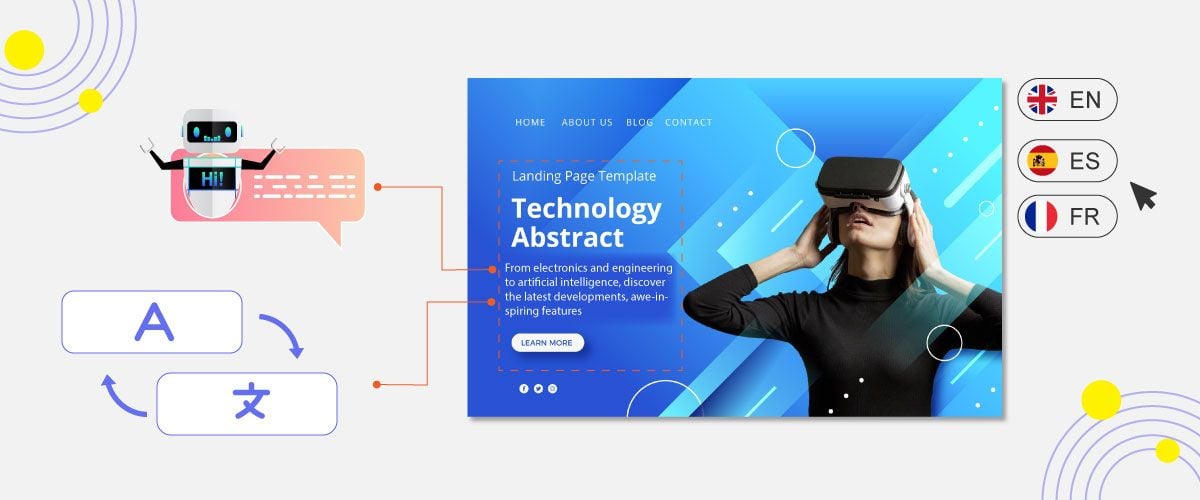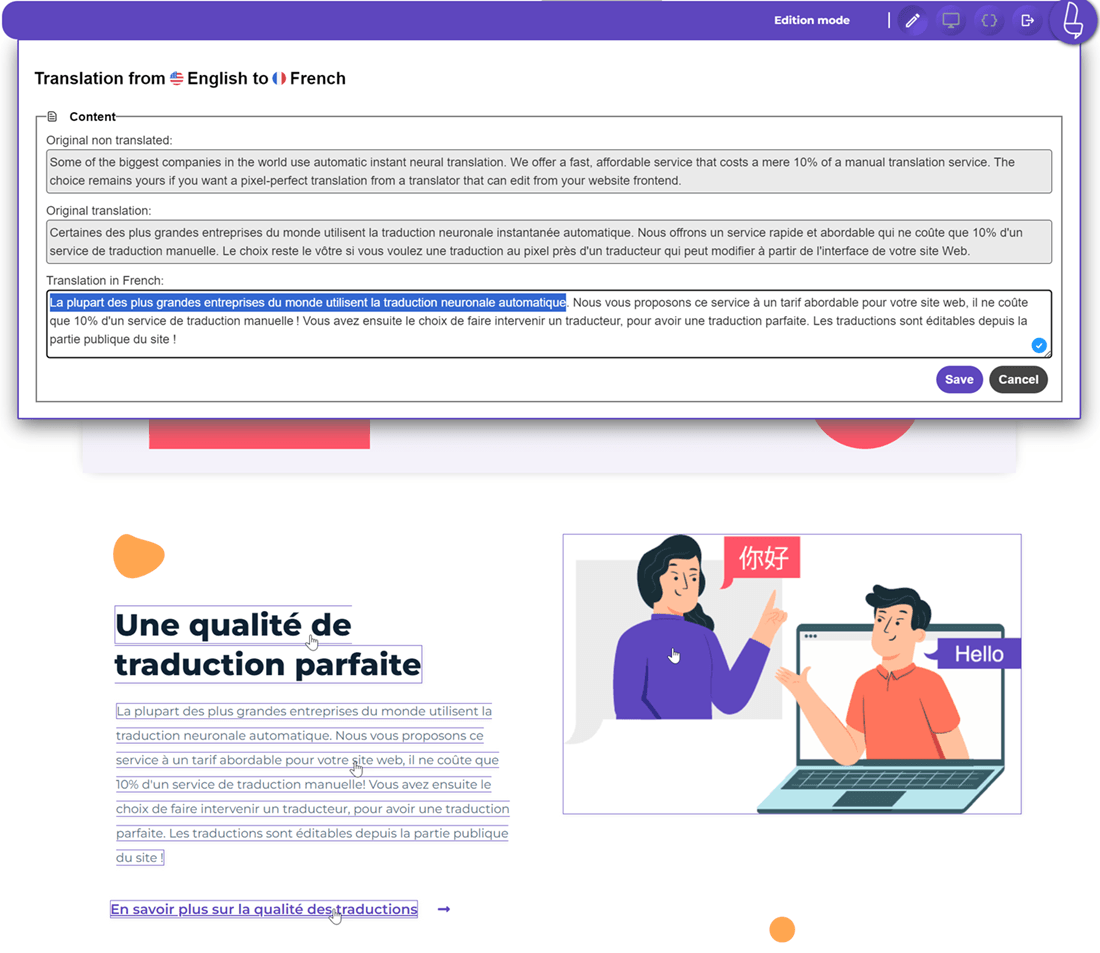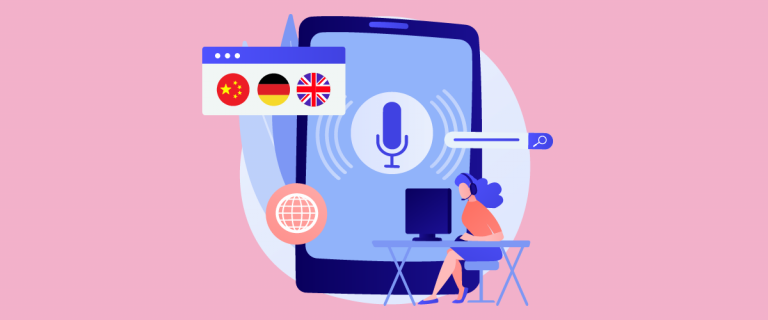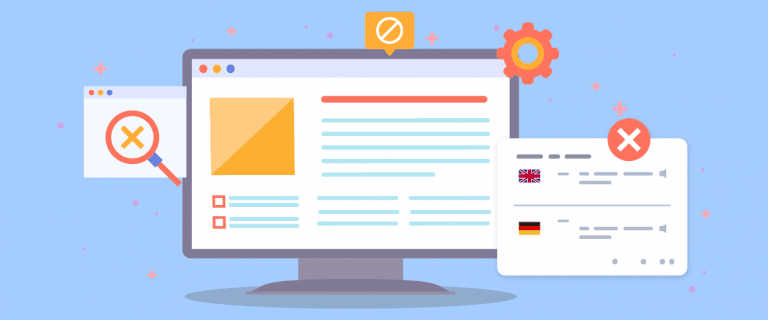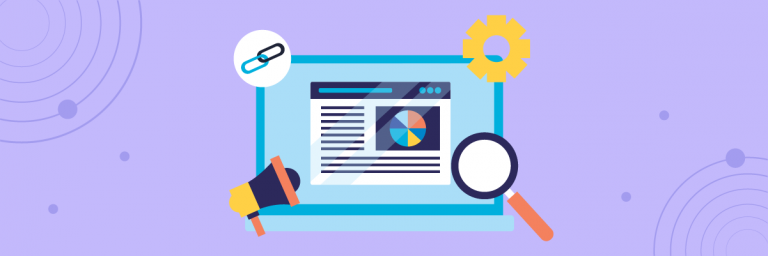In addition to offering the ability to write code or explain concepts, ChatGPT can also be a useful tool for translating text. However, how does its performance compare to other advanced machine translation service providers that do the same?
This article will discuss what machine translation underlying ChatGPT technology is, its advantages, and compare how ChatGPT’s capabilities stack up against machine translation software. Stay tuned and read this article until the end.
Deep understanding of AI machine translation
Machine translation, or what is usually called AI translation, is an automatic translation technology that uses artificial intelligence (artificial intelligence) to translate text from one language to another. This technology utilizes an artificial neural network drilled with hundreds of thousands of sentence pairs in various languages.
According to Amazon, the idea of automatically translating human language with computers emerged in the 1950s. However, the complexity of translation back then far exceeded computer scientists’ expectations. It wasn’t until the 2000s that computer software, data, and hardware were capable of basic machine translation.
Early developers used primary language statistical data to train computers to translate text. This requires a lot of manual labor and time. Every new language requires redevelopment. Since then, the accuracy and speed of machine translation have continued to improve.
Some emerging machine translation strategies include rule-based, statistical, syntax-based, and neural machine translation. Neural machine translation is considered state-of-the-art, using artificial intelligence and neural networks to improve translation quality continuously.
NMT uses deep neural networks to perform translation automatically, where several layers of encoders and decoders handle input and output. This technology is considered more accurate than traditional statistical approaches because it can understand the context and meaning of phrases rather than just translating word for word.
ChatGPT is also an artificial intelligence application that uses NMT-based machine learning technology, although with a slightly different architecture, namely using a transformer architecture called Generative Pre-trained Transformer (GPT).
GPT has been drilled on a massive collection of textual data in various languages to produce human-like responses when given input in the form of questions or commands in natural language. Then, ChatGPT is packaged into a chat interface so that users can interact with ChatGPT like a humans.
The advantages of machine translation
After understanding what machine translation is and its relationship with ChatGPT, what are the reasons humans continue to develop machine translation technology today, and what are its advantages? Here are some reasons.
- Quick process: Machines can translate text within seconds, much faster than human translators. This is highly useful for translating documents or content in large volumes.
- Low cost: Machine translation is much cheaper than hiring professional translators. Users only need to pay a monthly or yearly subscription to access automatic translation services.
- 24/7 availability: Machine translation services like Google Translate or DeepL can be accessed anytime, allowing translation to be done day or night without time constraints.
- Consistency: Machines translate with a consistent style and word choice, unlike humans, whose translations may vary. This helps maintain consistency in terms and writing style.
- Scalability: Machine capacity can be easily increased to handle the increased volume of translation needed. This is suitable for large-scale projects.
How does ChatGPT work for translation?
Now that you understand the advantages of AI machine translation, which ChatGPT also utilizes as a cross-language translation technology, let’s discuss how ChatGPT works in translation.
ChatGPT utilizes a trained generative machine learning architecture known as a Generative Pre-trained Transformer (GPT). This GPT model was previously trained on a large-scale multilingual textual dataset containing hundreds of billions of words. Training on such a large-scale dataset enables ChatGPT to deeply understand human language patterns and the context of word usage.
By leveraging the deep understanding of language patterns acquired through training the GPT model, ChatGPT can automatically analyze sentences in the source language and produce accurate translations within seconds. The machine entirely conducts the translation process without requiring human intervention.
This provides ChatGPT with several capabilities, including the following.
- Flexibility in language: While not limited to a particular language pair, ChatGPT can handle a variety of languages well. This makes it a very flexible option for users who need translation between different languages. As below we’ll try to translate sentences into several languages.
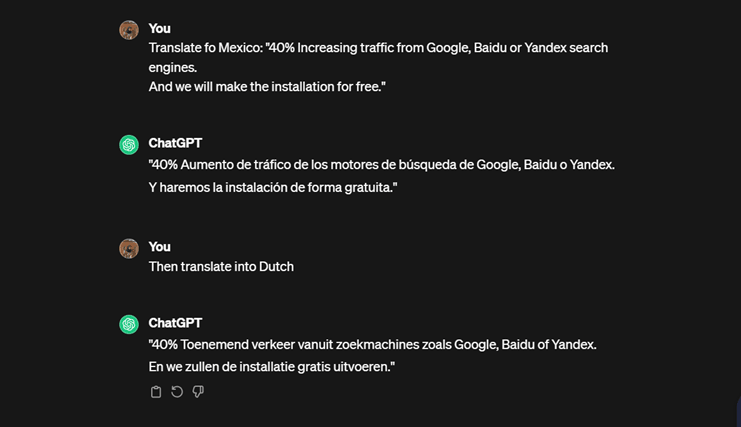
- Contextual ability: ChatGPT can understand the context of the text being translated, enabling it to produce more accurate and contextually appropriate translations. This is particularly useful in situations where a literal translation is not sufficient to convey the intended meaning. For example, ChatGPT can detect whether the text contains humor, expressions of sadness, or serious discussions, and then adjust its word choices in the translation to preserve the intended meaning accurately. ChatGPT can also capture the relationships between words, phrases, and sentences in the original text to generate coherent sentence structures in the target language. This makes ChatGPT translations sound more natural and fluent.
- Handling informal language and slang: ChatGPT is able to understand and translate non-standard language variations that often appear in informal conversations or writing. ChatGPT can also capture the meaning and express slang expressions, groups of words, or idioms into its target language, even though a literal translation may not make sense. With this capability, ChatGPT is suitable for translating everyday conversations, scheduling social media posts, dare forums, and other content that uses a wide variety of informal languages. The resulting translation will sound more natural and closer to conversational language in the target language.
- Consistency and speed: ChatGPT can provide consistent and fast translations, even for large volumes of text. The speed and consistency of ChatGPT are highly beneficial for translating documents, articles, or content in large quantities. ChatGPT will translate the entire text with a uniform style and word choice, without variations like humans. ChatGPT’s speed allows a large number of words to be translated in a shorter time compared to humans. For example, ChatGPT can translate thousands of words in minutes, something that may take hours if done manually by a human translator. However, it’s important to note that there is a maximum character limit of 2,048 characters per request.
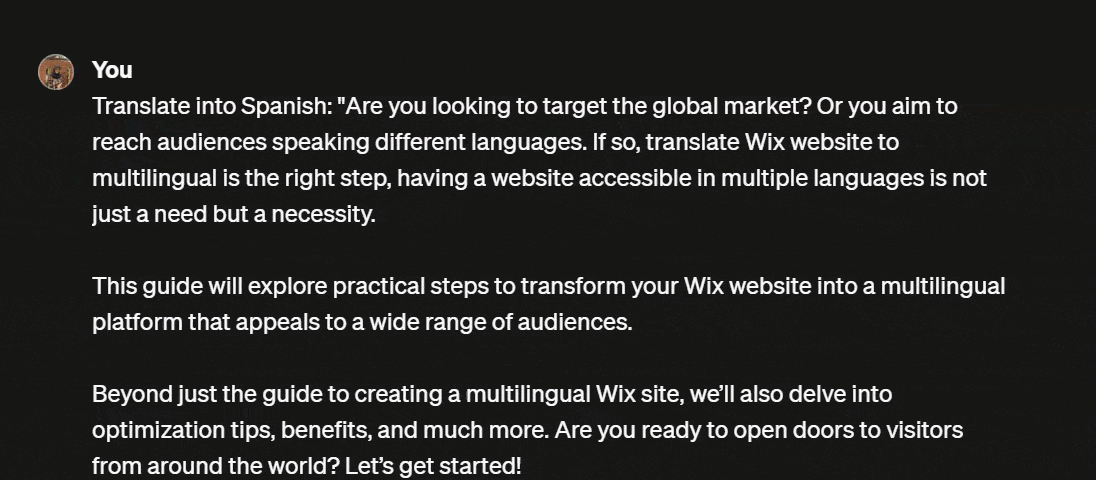
- Multifunctionality & interactivity: Apart from translating, ChatGPT can also perform other translation tasks. For example, you can ask to translate a sentence and then ask questions about the content of the translation. These questions can range from asking whether the translation is suitable for a professional setting to asking the meaning of a particular word. Additionally, if you are dissatisfied with a translation or want to clarify it, you can have a back-and-forth conversation with ChatGPT to improve and define the translation.
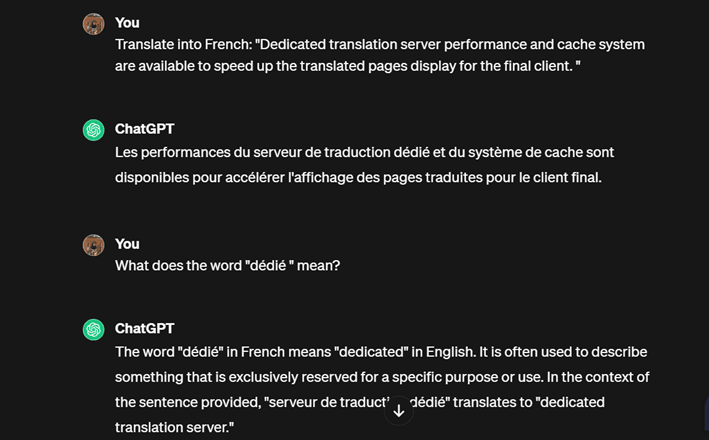
ChatGPT can indeed be used to translate sentences or content, but it still has a drawback, namely that there is a limit on the number of characters in each request, namely 2048 characters.
This is certainly less than ideal if the user needs more translations than that, one of which is when translating a website. Therefore, another translation machine that can handle this is needed.
Compare capabilities of machine translation services with ChatGPT
ChatGPT has limitations on the number of characters that can be inputted in one request, which also occurs with Google Translate, limiting it to only 3000 characters.
If you need to translate more than that, you have to do it multiple times, which is ineffective. Therefore, another translation solution like Linguise is needed.
Linguise translation service has the same translation technology base as Google Translate, DeepL, and others.
Here is a comparison of the capabilities of machine translation providers with ChatGPT.
Strength of machine translation services
Below are some advantages of machine translation services you need to know.
- Machine translation services are translation tools specifically trained to handle translation tasks. As a result, they can provide reliable quality translations for common language pairs and texts involving standard or formal language. In contrast, ChatGPT translations may not be the most accurate because they are not specifically designed to translate text.
- Machine translation software can help translate text in many languages, including those that are less commonly used or written. For instance, Linguise translation provider supports over 85 traditional, less common, or international languages. Meanwhile, ChatGPT may translate adequately for common languages but struggles when given texts in less commonly used languages.
- Machine translation providers are also well-suited for quickly translating large volumes of text. Linguise could translate up to 600 thousand words during its trial period, whereas ChatGPT can only accommodate around 3,000 words per request. Providing new text to ChatGPT to continue translating may take considerable time and lack continuity.
- Offering responsive and informative customer support helps users resolve issues or get assistance when needed. ChatGPT may not have the same level of customer support.
- Some machine translation providers, like Linguise, offer advanced features such as a live editor that allows users to edit translations directly in the user interface. They also offer translation exceptions, which allow users to mark specific words or phrases that should not be translated in a specific way. On the other hand, ChatGPT does not have these features. ChatGPT typically generates automatic translations without providing direct options to edit or exclude specific translations. This means ChatGPT users may not have full control over the translation results.
Limitations of machine translation services
Although offering several advantages, machine translation services still have some drawbacks. Here are some of their limitations.
- Despite continuous improvement, machine translations have not yet reached the quality equivalent to human translation regarding accuracy, fluency, and language nuances.
- Machine translation providers typically only produce translations directly when given a text. They cannot discuss with users or answer questions about their translations.
- While machine translation providers may generate fairly accurate translations for general texts, they may not be as accurate for highly specific or technical terms in a particular field.
Combine machine translation and human translator
As discussed above, despite offering various advanced advantages, machine translation still has several shortcomings. Among them are machine-translated results that may not fully capture cultural nuances, translations that lack interactivity, and the technology’s inability to translate specific or technical languages.
Now, these shortcomings can be overcome with the assistance and collaboration of humans rather than relying solely on machines. Therefore, you can choose a service that combines machine translation technology and human translators. Linguise is one such translation service that provides this solution.
Linguise is a website translation service capable of translating content automatically. Despite being automatic, users can still collaborate with humans, such as professional translators. This is because Linguise allows you to add and setup translators as needed so that translations can align with cultural nuances.
You can manage translator access rights as needed; they will have dashboards according to the specified language. You can Add member and set them as translators, then select the language as shown in the image below.
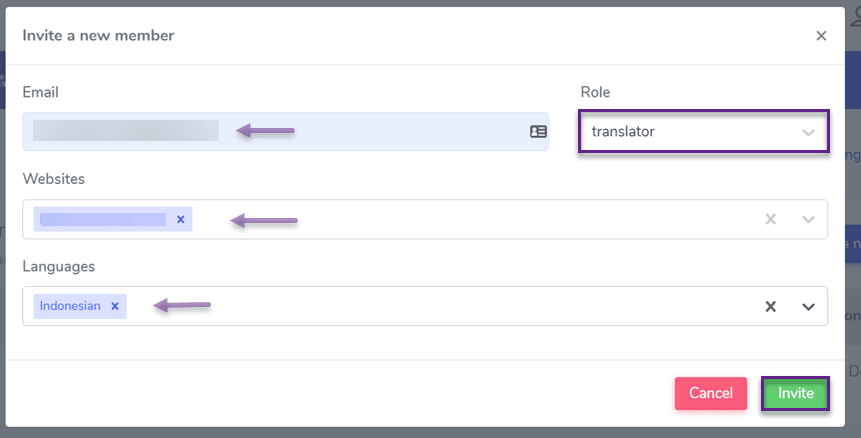
In addition to adding translators, Linguise can address the next drawback, which is editing translations produced with the live editor feature. Users can edit the resulting translations. So translations can be more accurate and personalized according to your needs.
You simply choose the language and click on which part of the translation you want to edit. Then, you can also collaborate with translators to edit together.
Finally, machine translation often cannot translate specific technical phrases. But don’t worry because Linguise provides a feature that excludes translation with rules. You can exclude technical phrases or brand names you want to keep in the default language. Here’s the example of exclude translation based on text.
With these various features, you get machine translation technology and supporting features to be still able to edit manually.
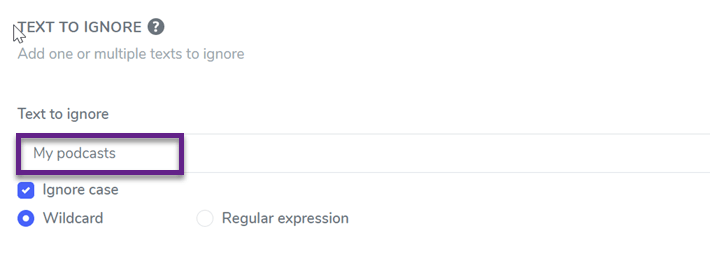
Choose the right translation services for better performance
ChatGPT can be a translation choice for those of you who translate content into various languages, mainly because the high interactivity allows users to produce translations as desired.
However, this solution is not appropriate if you need a large number of translations at once, such as website translations. This is because ChatGPT limits characters to 2048. This also happens to machine translation providers such as Google Translate.
Therefore, choosing an exemplary translation service that can overcome these limitations is essential. Like Linguise, which can translate website pages at once. As well as several superior features that have been explained previously.
From the explanation of the features above, Linguise is the best solution as a high-quality website translation service and is integrated with various services.
From the explanation of the above features, Linguise is the best solution as a high-quality website translation service integrated with various services. It provides perfect translation quality, and Linguise also supports your multilingual website presence on search engines by optimizing SEO.
A good implementation of multilingual SEO can bring your site to the international stage and be discovered by various new audiences. So what are you waiting for? Register for a free Linguise account for better website translation performance now!

